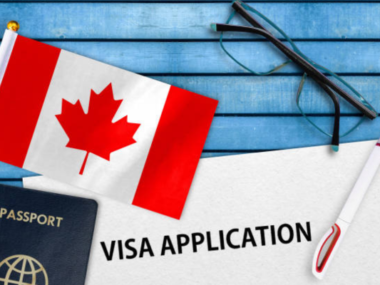The United States is a popular destination for those who wish to immigrate abroad. It is a nation that offers many of options for employment and permanent residence. Due to its economic prosperity, it draws tourists and prospective immigrants from all over the world. All of them are wondering how to obtain a green card.
Getting Permanent Residency in the US: A Complete Guide for 2024
The Green Card is a document that enables you to enter and remain in the United States permanently. You can relocate to any US state with a green card, find employment to support your family and work for a living.
You can also travel within and outside of the United States. However you are not permitted to remain outside of the United States for more than one year, otherwise, your Green Card will expire and you will have to go through the process of applying again.
What Kinds of Green Cards Are Available in the USA?
Various US Green Card varieties exist based on your circumstances and the method of obtaining them. There are essentially four types of Green Cards, with unique qualifications and visas for each:
- Green Cards sponsored by family: If you have close relatives in the US and you wish to visit them, you may be granted a family-supported Green Card. Only members of the immediate family, such as spouses, kids, siblings, or parents of a US citizen or permanent resident, are eligible for this kind of Green Card.
- Green Cards sponsored by employment: If you are a foreign national who has secured employment in the US, you will be granted a Green Card. Your employer will support your stay in the United States and cover the cost of the forms and application process. You are obligated to work for that employer until the end of your contract if you have an employment-sponsored Green Card. You can’t work for another company or obtain another job until your sponsorship criteria are fulfilled.
- Returning Resident Green Card: This card is for people who were previously granted one, but for unavoidable reasons, left the country and did not return for more than a year. You cannot control external factors such as being detained abroad or being prohibited from returning for cultural or familial reasons. To be granted this visa, you will need to provide documentation proving that you were not given the chance to return.
- The US organizes an annual visa lottery for nationals of nations with low rates of immigration to the US. This program is known as the Diversity Visa Green Card. You will be able to obtain a passport if you apply for this lottery and are granted a diversity visa, and Green Card.
Do I Qualify to Apply for a Green Card?
Whatever USA Green Card application you decide to submit, there are several prerequisites you need to meet. There are certain requirements for each US immigrant visa, which are listed below, but each visa also has a few requirements that you must meet:
- You have to be a resident of a foreign nation; most applicants for a Green Card must do it from within their nation. There are additional conditions that you must fulfil if you are in the United States.
- You need to have a dual intent visa if you are in the US. These are temporary visas that let you apply for a Green Card after a set amount of time. An example of a dual intent visa is the H-1B visa.
- You can apply for a family-based Green Card if you have family in the US. This family member can be your biological or adoptive parents, your child, your sibling, your fiancé or spouse, or any combination of these. The family member who will sponsor your application forms must be a citizen or permanent resident of the United States. The family member must also demonstrate that they can sustain you financially for the first few months following your arrival in the US, or until you secure employment.
A family member cannot sponsor you for a Green Card if they are less than 21. The family member must be at least 21 years old and have a current US address. Furthermore, your relative needs to be currently living in the US and present a valid US address where you would also be moving once you get the Green Card.
- You need a job offer to be eligible for employment-based Green Cards; if you have secured employment in the US, you must provide documentation of it. This entails a contract or a signed letter from your company specifying the start date of your employment following the issuance of your green card. Make sure you have legitimate paperwork proving you have a job in the US because no US institution would recognize oral agreements when it comes to Green Cards.
If your employer doesn’t have enough money to pay your salary, you still must ensure that they satisfy the minimal requirements for financial stability. The US organizations in charge of granting immigration visas and Green Cards will make financial statements from the company sponsoring your visa. If the financial statements show that the employer does not have enough money to pay your salary, then you will not get an approved Green Card.
- If you were in the US in the past, you must have respected all laws and regulations and not overstayed your visa.
- You must not have a criminal past.
How Can I Get My Green Card?
Following your examination of the various US immigrant visa categories, requirements, and possible applications, you need to begin the application process for a Green Card, which can take anywhere from seven to thirty-three months to complete. The majority of Green Card applications require the following stages to be completed:
- Have a sponsor petition for you
Your sponsor, who may be a family member or employer, must file the petition on your behalf. Form I-130, Petition for Alien Relatives, is used for family-sponsored petitions, and Form I-140, Immigrant Petition for Alien Worker, is used for petitions based on employment. To be considered, the petition needs to be submitted to both the USCIS and the Green Card fee must be paid.
- Acquire the NVC Package
NVC will provide you with a packet if your petition is accepted; USCIS will review the petition and determine your eligibility. Your petition will be approved, and your documents will be sent to the National Visa Center (NVC), which will package and mail it to your home country. All of the forms and instructions you need to complete for your application are included in the package. This package will not be sent by NVC until your priority date is up to date.
- Apply at the US embassy for a visa.
You have to apply for a visa at the US Embassy. To do this, follow the guidelines in the NVC package, pay the application fees, and go to the US Embassy in your home country. You will submit supporting documents as well as have your visa interview.
- Travel to the US
If your visa is granted, you will need to have your arrival package with you when you travel to the US. The US Embassy will provide you with an arrival package once you have finished all the requirements. When you first arrive in the US, you must bring the arrival package with you; you are not allowed to open it. It can only be opened by a US immigration official at a port of entry, who will then determine if you are permitted entrance into the US or not. Keep in mind that having a visa does not ensure you will be permitted entry into the United States. Immigration officers have the final say over any matter at any US port of entry.
Once in the US, you must file Form I-485, Application to Register Permanent Residence or Adjust Status to USCIS. This form is the one which will get you the permanent residence card. After USCIS processes your request for one to four weeks, you will get your Green Card in the mail.
What Distinguishes a US Visa from a Green Card?
A green card gives you the ability to remain in the US permanently, but a visa is only valid for a specific amount of time.
There are more differences than similarities between a visa and a green card. The most important thing to remember is that, as previously mentioned, an immigration visa can result in a green card, and a green card can lead to US citizenship, which is the greatest status a foreign national can have in the US. But there are other ways to get a green card as well. The distinctions between the two are as follows:
- The form
A visa is issued as a sticker or stamp that is applied to a traveller’s passport, while a green card is issued as a green plastic picture identity card.
- Validity
A Green Card must be renewed every ten years, but it is permanent and never expires. On the other hand, a visa is only valid for a specific period and cannot be extended.
- Working
Those with green cards can work. However, if a visa holder is not on a specified kind of work visa, they are not allowed to work.
- Living in the US
Green Card holders should be careful and not use this document as a multiple-entry visa, since their status may be revoked if they spend a lot of time outside the US, and use it as a second home. Whereas, visa holders, depending on the visa, may be entitled to enter the country once, or enter as many times as they want.
Conclusion
The process of gaining a Permanent Residency (PR) in the US is still complicated and involves several steps and requirements. This comprehensive tutorial is a valuable tool for anyone attempting to understand the complexities involved in the PR application process. The guide describes the various paths available to anyone hoping to obtain permanent residence (PR) in the US, ranging from employment-based sponsorship to family sponsorship, investment visas to diversity lottery schemes.
It also offers comprehensive details on the conditions for qualifying, the application process, the paperwork needed, and any difficulties applicants might run into. This handbook seeks to provide people with the information and tools necessary to pursue their objective of gaining a Permanent Residency in the United States in 2024 and beyond by providing clarity and direction.




